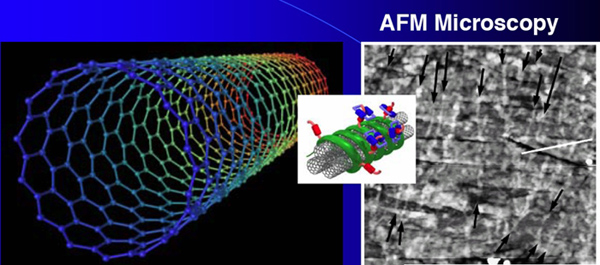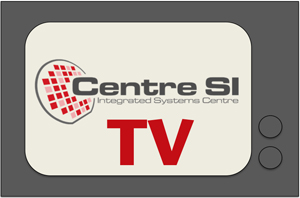Go to
December 5, 2007
Nano- and Bio-Technology for Sensors and Biosensors: Solutions and Applications
Sandro Carrara, Integrated Systems Laboratory, EPFL-IC-ISIM-LSI, Lausanne
Abstract: "Biology is not simply writing information; it is doing something about it. A biological system can be exceedingly small. Many of the cells are very tiny, but they are very active" said Richard Feynman in his famous 1959 lesson at Massachusetts Institute of Technology. Therefore, we know that nanotechnology has to learn how to be small and very active from biology. Thus, the best "Nanotechnology" is the "Nano-BIO-technology". Quantum effects take place at the nanoscale level and so they will be regarded transferring theoretical aspects into the experimental results. To show this, biological and organic building blocks in the nanometers scale will be considered. Their working advantages in the field of biosensors will be demonstrated by considering some examples. 1D, 2D, and 3D nano-structures made with these blocks will be conceptually discussed and experimental investigations will be shown. Advantages of these nano-structures will be evaluated by comparison with non-nano-structured materials. Applications to biosensors for metabolism monitoring, cancer markers detection, DNA chip will be used to show enhanced performances as due to the nanotechnology building blocks. Applications to sensors for gas and water pollution monitoring will also be used. The bio-physics of the related interface between the sensor's electrodes surface and the solutions of the samples will be discussed in-depth. Successful examples resulting in increased sensitivity, specificity, and detection capability will be shown. Different simple technologies will be considered for low-cost systems development in ambient and biomedical monitoring applications. Finally, a new and innovative idea of nano-bio-technology application at the interface with human life will be presented.

About the speaker: Sandro Carrara graduated in Physics from the University of Genoa, Italy; received the Ph.D. in Biochemistry and Biophysics from the University of Padoa, Italy. During his PhD studies, his main interest was centered on electron conductivity phenomena through thin films made by molecules such as fatty acids, arachidates, polymers, DNA and proteins. Some of these films were nano-structured, for example semiconductor nanoparticles. In 1996, he won a prize in a NATO Advanced Research Workshop for his original contribution on the role of nanoparticles size in single-electron conductivity.
He is currently working in the field of thin films by using different investigation techniques, such as Small Angle X-ray Scattering, Atomic Force Microscopy, Surface Plasmon Resonance Spectroscopy, Electrochemical Voltammetry and Impedance Spectroscopy. The applications of his research activity are in the field of sensing, with particular focus on the development of protein and DNA based Biosensors. He has more then 46 international publications and 10 patents. From 1997 to 2000, he was a member of an international committee, the User Committee of the ELETTRA Synchrotron. From 2000 to 2003, he was scientific leader of a National Research Program (PNR) in the field of Nanobiotechnology. He was Assistant Professor in Biophysics at the Genoa University and Professor of Nanobiotechnology at the Bologna University. He recently joined the Integrated Systems Laboratory of the Ecole Polytechnique Fédérale de Lausanne (EPFL) as a Senior Research Scientist.
Download visuals (2.8 MB pdf)
Presentation slides with audio
Secondary navigation
- January 29, 2018
- August 30, 2017
- Past seminars
- 2016 - 2017 Seminars
- 2015 - 2016 Seminars
- 2014 - 2015 Seminars
- 2013 - 2014 Seminars
- 2012 - 2013 Seminars
- 2011 - 2012 Seminars
- 2010 - 2011 Seminars
- 2009 - 2010 Seminars
- 2008 - 2009 Seminars
- 2007 - 2008 Seminars
- 2006 - 2007 Seminars
- August 31, 2007
- June 29, 2007
- June 20, 2007
- June 5, 2007
- May 30, 2007
- May 16, 2007
- May 15, 2007
- April 24, 2007
- March 27, 2007
- March 14, 2007
- February 9, 2007
- February 8, 2007
- January 12, 2007
- December 5, 2006
- November 14, 2006
- October 31, 2006
- October 27, 2006
- October 26, 2006
- October 20, 2006
- September 20, 2006
- September 20, 2006
- September 20, 2006
- September 19, 2006
- 2005 - 2006 Seminars
- August 23, 2006
- August 22, 2006
- June 26, 2006
- June 20, 2006
- June 16, 2006
- June 7, 2006
- June 6, 2006
- May 30, 2006
- May 17, 2006
- May 10, 2006
- April 27, 2006
- April 12, 2006
- March 31, 2006
- March 29, 2006
- March 22, 2006
- March 15, 2006
- February 27, 2006
- February 8, 2006
- January 25, 2006
- January 19, 2006
- January 18, 2006
- January 17, 2006
- January 11, 2006
- November 30, 2005
- November 23, 2005
- November 2, 2005
- October 26, 2005
- October 25, 2005
- October 5, 2005
- September 28, 2005
- 2005 Seminars

